Partially hyperbolic dynamics
Marcelo Viana
The concept of a hyperbolic dynamical system was introduced by S. Smale, D. Anosov and Ya. Sinai in the 1960's. One goal was to characterize (structurally) stable systems, that is, whose qualitative behavior is not affected by small perturbations of the system. That was eventually achieved in a tour de force by R. Mañé and others. Another goal was to provide a paradigm for the behavior of "most" dynamical systems. This turned out to be too optimistic and, in response, various generalizations of hyperbolicity have been proposed. Among them, the notion of partial hyperbolicity proved to be particularly fruitful, and has been at the heart of the research in the field for the last 25+ years. I will briefly discuss some of the surprising features exhibited by partially hyperbolic systems, especially concerning rigidity, Lyapunov exponents and pathological foliations.
Durée :
Mathematics without Borders: The Centennial of the International Mathematical Union
Du au
Palais Universitaire, Strasbourg
We celebrate the Centennial of the International Mathematical Union in Strasbourg, founded in 1920 at the ICM in the same location. The International Mathematical Union (IMU) was founded in 1920 at Strasbourg, marked by the peculiar situation after World War I. Today’s IMU was re-created after World War II. The centennial of the foundation is a moment to reflect on the long and varied history of international cooperation of mathematicians and show that the modern IMU seeks to include mathematicians from all countries
Thème(s) : Mathématiques
Producteur : Université de Strasbourg
Réalisateur : Université de Strasbourg
Tuesday morning
Dynamics of perfect gases: a statistical approach
Laure Saint-Raymond
The evolution of a gas can be described by different models depending on the observation scale. A natural question, raised by Hilbert in his sixth problem, is whether these models provide consistent predictions. In particular, for rarefied gases, it is expected that statistical models of kinetic theory can be obtained directly from molecular dynamics governed by the fundamental principles of mechanics. The objective of this talk is to present recent progresses in the understanding of this limiting process, providing a complete statistical description of hard sphere gases.
Of crystals and corals
Stanislav Smirnov
There are many real-world processes exhibiting fractal growing shapes - from mineral deposition and coral growth to lightning strikes. Two mathematical models were introduced about 40 years ago: Diffusion Limited Aggregation by Witten and Sanders and its generalization, Dielectric Breakdown Model by Niemayer et al. Numerically they approximate very well a wide range of physical phenomena. However, despite a very simple definition (DLA cluster grows by attaching particles undergoing Brownian motion when they hit the aggregate), very little is known today, besides the famous Harry Kesten upper bound on the DLA growth. We will try to show the flavor of these models and present some new results.
Geometrization
Gang Tian
Geometrization has played a very important role in mathematical developments in last few decades. It applies concepts and techniques in differential geometry to studying problems which arise from other fields in mathematics. A famous example is Perelman’s solution of the Poincaré conjecture in topology by using Ricci flow. In this short lecture, I will show in some simpler examples what is the geometrization and how it works. I will also present some outstanding problems which we may provide solutions by using geometrization. Any substantial progress on these problems will lead to profound advances in mathematics.
Coulomb branches of 3d supersymmetric gauge theories: construction of new varieties
Hiraku Nakajima
Gauge theories, originally considered by physicists, have been studied in mathematics since the late '70s. For example, Donaldson and others gave a definition of new topological invariants of 3, 4-manifolds based on gauge theories. In a joint work with Braverman and Finkelberg, I gave a mathematically rigorous definition of what physicists (Seiberg, Witten, et al) call Coulomb branches of 3d supersymmetric gauge theories. We regard our construction as defining new varieties instead of topological invariants.
New approaches for moduli spaces
Ulrike Tillmann
Manifolds are fundamental objects in geometry, and together with their diffeomorphisms they have been studied intensively. Powerful invariants provided by cobordism theory and surgery theory have been applied with much success in the past. Yet, the topology of their diffeomorphism groups, or equivalently their moduli spaces, has been very hard to quantify. One approach via algebraic K-theory replaces the manifold by a thickening of itself -- by taking Cartesian products with high-dimensional cubes. In the last twenty years, motivated by considerations in topological field theory, a rather different approach has proved highly effective. Here the complexity of the manifold is increased while keeping the dimension constant. The first breakthrough was the proof of Mumford's conjecture on the stable homology of moduli spaces of Riemann surfaces. In the last ten years Galatius and Randal-Williams have against expectation been able to prove an analogue for higher dimensional manifolds. Their results have seen surprising applications.
Partially hyperbolic dynamics
Marcelo Viana
The concept of a hyperbolic dynamical system was introduced by S. Smale, D. Anosov and Ya. Sinai in the 1960's. One goal was to characterize (structurally) stable systems, that is, whose qualitative behavior is not affected by small perturbations of the system. That was eventually achieved in a tour de force by R. Mañé and others. Another goal was to provide a paradigm for the behavior of "most" dynamical systems. This turned out to be too optimistic and, in response, various generalizations of hyperbolicity have been proposed. Among them, the notion of partial hyperbolicity proved to be particularly fruitful, and has been at the heart of the research in the field for the last 25+ years. I will briefly discuss some of the surprising features exhibited by partially hyperbolic systems, especially concerning rigidity, Lyapunov exponents and pathological foliations.

